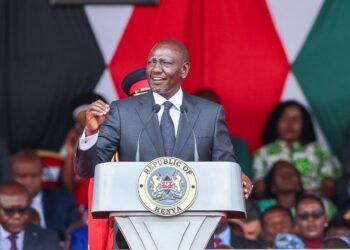Kenya’s current debt stock is projected to range above Kshs. 9.4 trillion by June this year, and cross the Kshs. 10 trillion debt ceiling by June 2024. This is according to a 2023 Public Finance Management Regulation Amendments report presented by the Parliamentary Budget Office (PBO) to the Abdi Shurie-led Public Debt and Privatization Committee.
The committee heard that, with the public debt limit set at Kshs. 10 trillion, this means that the borrowing space to finance the financial year 2023/24 will be expected to be less than Kshs. 600 billion, and will therefore be insufficient to finance the budget deficit estimated to amount to Kshs. 720.1 billion, as indicated by the 2023 Budget Policy Statement.

This insufficiency of borrowing space is one of the key reasons for the amendment of the debt ceiling as it aims to provide adequate fiscal space to undertake the FY 2022/23 budget and medium-term expenditure.
This will be the 7th time the debt ceiling is being amended since 2013 and raises questions relating to the perceived role of debt ceiling in fiscal policy management and the critical aspect of debt sustainability and the need to finance long-term economic policy.
The proposal comes at a time when the economy is characterized by high cost of borrowing from the domestic and external markets, high inflation and depreciating exchange rates.
This, combined with poor performance of domestic tax collection and preference of the domestic market for short term government securities, has resulted in increased cost of meeting government expenditure while creating liquidity constraints in government expenditure capacity.






























































